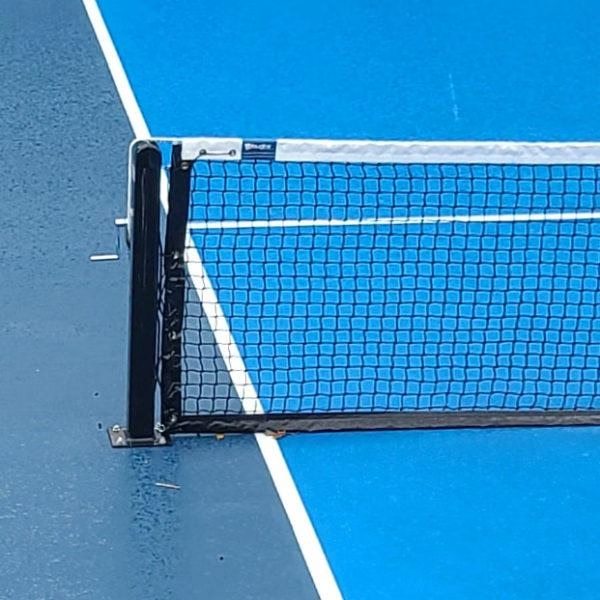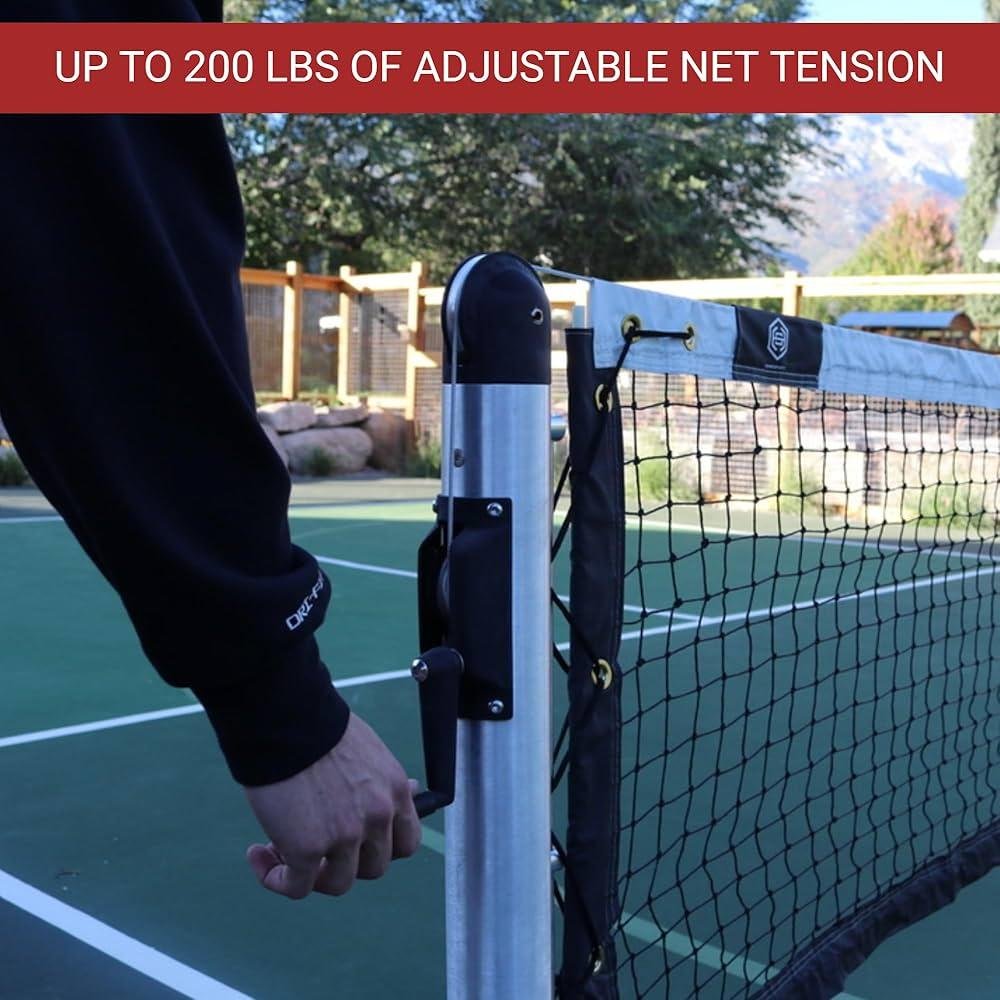Blog
what posts to use for pickleball

Finding the Perfect Posts for Your Pickleball Experience
In the vibrant world of pickleball, where fast-paced fun meets tactical gameplay, the choice of equipment can significantly enhance your experience on the court. While paddles and balls often steal the spotlight, one critical element plays a pivotal role in shaping your game—posts. These unassuming supports are the backbone of any pickleball setup, defining the space in which thrilling rallies unfold, and the precision that makes the sport so exhilarating. This article delves into the various types of posts available, exploring their materials, features, and how they contribute to both recreational play and competitive matches. Whether you’re setting up in your backyard or preparing for tournament-level play, understanding what posts to use for pickleball will help you make an informed decision that ensures your game remains dynamic and enjoyable. Join us as we examine the options, weigh the pros and cons, and guide you toward the ideal posts that will support your pickleball journey.
Selecting the Right Materials for Durable Pickleball Posts
When it comes to selecting materials for your pickleball posts, durability and stability are paramount. The most common materials used are aluminum, wood, and steel. Aluminum is lightweight and resistant to rust, making it an excellent choice for outdoor settings. Steel posts provide superior strength and can withstand harsher weather conditions, while wooden posts offer a classic aesthetic but require regular maintenance to prevent rot and wear. Balancing aesthetics and functionality is essential, so consider how each material fits into the overall design of your pickleball court.
When evaluating materials, think about the following factors:
- Weather Resistance: Ensure the material can withstand elements such as rain, sun, and humidity.
- Maintenance: Some materials will require more upkeep than others; aluminum typically needs less than wood.
- Cost: Establish a budget that covers both installation and potential future repairs.
- Weight: Heavier materials may provide more stability but can be challenging to install.
| Material | Pros | Cons |
|---|---|---|
| Aluminum | Lightweight, rust-resistant | Can be less durable than steel |
| Wood | Aesthetic appeal, easy to source | Requires maintenance, can rot |
| Steel | Very durable, weather-resistant | Heavy, may need rust protection |

Height and Stability Considerations for Optimal Gameplay
When selecting posts for pickleball, height plays a crucial role in ensuring an enjoyable and competitive experience. The standard height for pickleball nets is 36 inches at the ends and 34 inches at the center. This dimension should guide the selection of any posts, as they must be adjustable to maintain this regulation. Here are some essential considerations for post height:
- Adjustability: Choose posts that allow for easy height adjustments to accommodate various playing styles and preferences.
- Material: Opt for sturdy materials such as steel or aluminum, which provide both durability and the necessary rigidity to stay upright during play.
Stability of the posts is equally important in maintaining the integrity of the game. A wobbly post can disrupt gameplay and lead to inconsistencies in net height, affecting players’ performance. Therefore, focus on selecting posts that are designed for stability. Consider these features:
- Base Design: Look for posts with a wide base or weighted bottom to prevent tipping.
- Installation Options: Some posts can be mounted directly into the ground or secured with anchors to enhance stability.

Enhancing Your Court Experience with Adjustable Post Options
When it comes to elevating your pickleball experience, selecting adjustable posts is key. These versatile options not only allow players to customize the net height to adhere to official game standards, but they also enable adaptability for casual play and practice sessions. By opting for adjustable posts, you can easily switch between different settings, accommodating players of various skill levels and ages, thereby fostering an inclusive and dynamic playing environment. Here are some benefits of using adjustable posts:
- Game Flexibility: Adjust the net height for recreational play or official matches.
- Ease of Use: Simple mechanisms for quick adjustments without specialized tools.
- Durability: Many adjustable posts are made from weather-resistant materials suitable for indoor and outdoor courts.
Incorporating adjustable post options into your court setup not only enhances gameplay but also promotes best practices in court maintenance. Consider the following important aspects when choosing the right posts:
| Post Type | Height Adjustment Range | Material |
|---|---|---|
| telescoping Aluminum | 36″ – 60″ | Aluminum |
| Standard PVC | 34″ – 36″ | PVC |
| Portable Steel | 34″ – 36″ | Steel |
By carefully selecting the most suitable adjustable posts, you not only promote a competitive atmosphere but also enrich the overall user experience on the court. These options will empower you to cater to the varying preferences of players, ensuring everyone can enjoy the exciting world of pickleball to its fullest potential.

Maintenance Tips to Prolong the Life of Your Pickleball Posts
To ensure your pickleball posts stand tall and withstand the test of time, regular maintenance is key. Start by inspecting your posts for any signs of wear or damage. Look for rust, cracks, or loose fittings. A quick wipe with a rust-inhibiting cleaner can protect any metal components, while a layer of outdoor paint can help prevent deterioration. If your posts are made from wood, consider applying a weather-sealing treatment at least once a year to shield them from moisture and UV damage.
Additionally, keep your surroundings tidy to minimize environmental impact. Remove any debris or vegetation that may encroach upon your courts. This will not only enhance the aesthetic appeal but also prevent potential damage from plant roots or falling branches. Regularly check the anchor fittings and ground stability to ensure they remain secure. Here’s a quick checklist for effective maintenance:
- Inspect for wear and damage: Rust, cracks, loose fittings
- Clean regularly: Remove dirt and debris
- Protect finishes: Apply rust-inhibiting cleaner and weather-sealing treatment
- Monitor surroundings: Trim vegetation and check for falling debris
- Secure anchor fittings: Ensure stability and alignment
Q&A
Q: What are the main types of posts used for pickleball nets?
A: The primary types of posts for pickleball nets are usually made of either steel or aluminum. Steel posts are known for their strength and durability, making them ideal for permanent installations. Aluminum posts, on the other hand, are lighter and may be more suitable for temporary setups, especially for those who like to have a portable court.
Q: How do I choose the right posts for an outdoor pickleball court?
A: When selecting posts for an outdoor pickleball court, consider materials that can withstand different weather conditions. Stainless steel or powder-coated aluminum is a great choice as they resist rust and corrosion. Additionally, check for posts that incorporate a grounding mechanism to keep them stable during intense play.
Q: Are there specific posts recommended for indoor pickleball courts?
A: For indoor courts, lightweight aluminum posts are often preferred since they facilitate easy adjustments and installations. The main focus should be on ensuring that the posts can be securely anchored without causing any damage to the floor. Adjustable options can also be beneficial if you frequently switch the net height for different games.
Q: What’s the best height for pickleball posts?
A: Pickleball posts should be set at a height of 36 inches at the sidelines and 34 inches in the middle to maintain the official net height. This ensures that players can enjoy a fair and competitive game while keeping in line with the official regulations.
Q: Do I need specialized tools to set up pickleball posts?
A: While basic tools such as a wrench and a level are often sufficient for setting up pickleball posts, specialized tools may be required for specific installations, especially for permanent setups. It’s always a good idea to follow the manufacturer’s instructions carefully to ensure proper installation.
Q: Are there any portable options for pickleball posts?
A: Absolutely! There are many portable pickleball post systems available that come with lightweight materials and quick assembly features. Look for options that offer collapsible designs and easy storage solutions for those who may want to set up courts in different locations, such as parks or driveways.
Q: Can I customize my pickleball posts?
A: Yes, customization is possible! Many manufacturers offer posts in various colors and finishes, allowing you to match them with your court aesthetics. You could even add padding for safety, especially in a high-traffic area. Custom logos and designs can also make your court uniquely yours!
Q: What should I consider in terms of budget when selecting pickleball posts?
A: Budget considerations hinges on the quality and durability of the posts. While it may be tempting to opt for the cheapest option, investing in sturdy posts can save money in the long run due to their longevity. Set a budget that balances quality with your financial constraints, and don’t hesitate to compare different options.
Insights and Conclusions
the choice of posts for your pickleball setup can significantly enhance your playing experience, whether you’re hosting a friendly match in your backyard or competing in a local tournament. As we’ve explored, the material, height, visibility, and durability of the posts can all impact gameplay—balancing functionality with your personal style is key. Remember to consider your specific needs and preferences before making a selection. Just as every player brings their own unique flair to the court, your choice of posts should reflect your individual approach to the game. Happy playing, and may your courts be ever lined and your games forever spirited!












